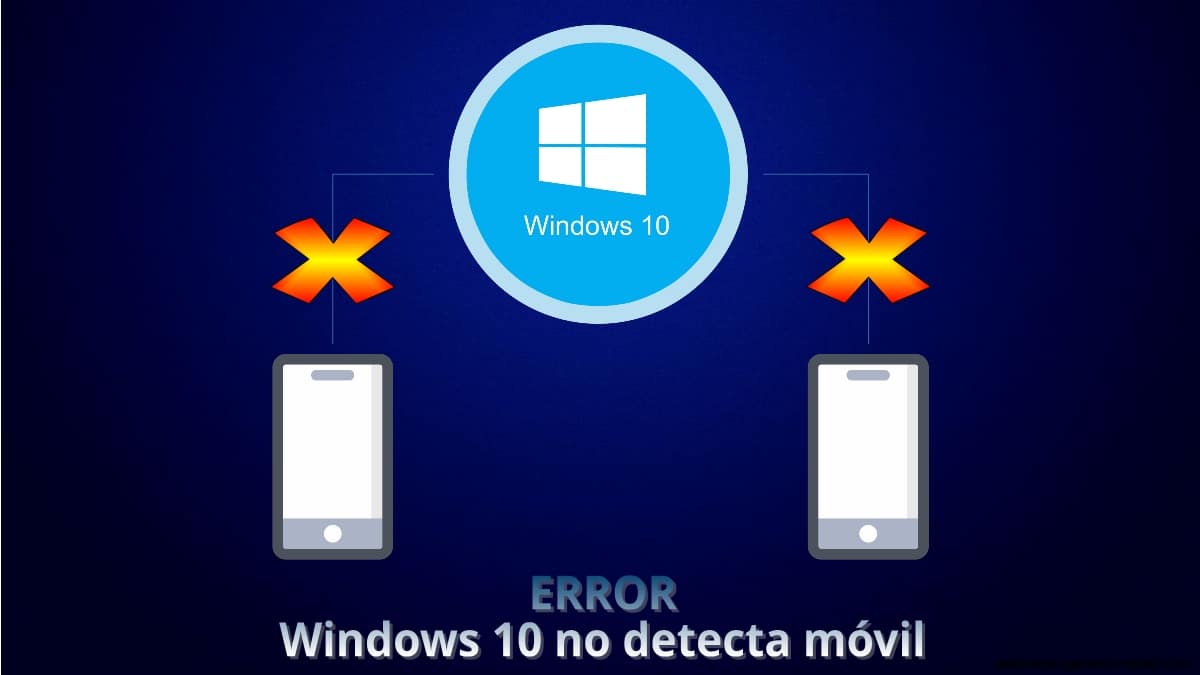
Windows 10 does not detect mobile: What to do to solve this problem?
In a recent previous post, we explored the use of little known and used technology WiFi Direct, which allows you to directly connect 2 devices (computers) via WiFi, for among many advantages or benefits, being able to interconnect them and transfer data (files) between them.
However, when it comes to Transfer data a mobile to a computer with Windows 10, the most popular, fast and efficient method is usually to use a USB cable. But this can cause, on some occasions, the problem that "Windows 10 does not detect mobile". And in case this happens, here we will explore what to do when Windows 10 does not recognize an Android device connected via USB.
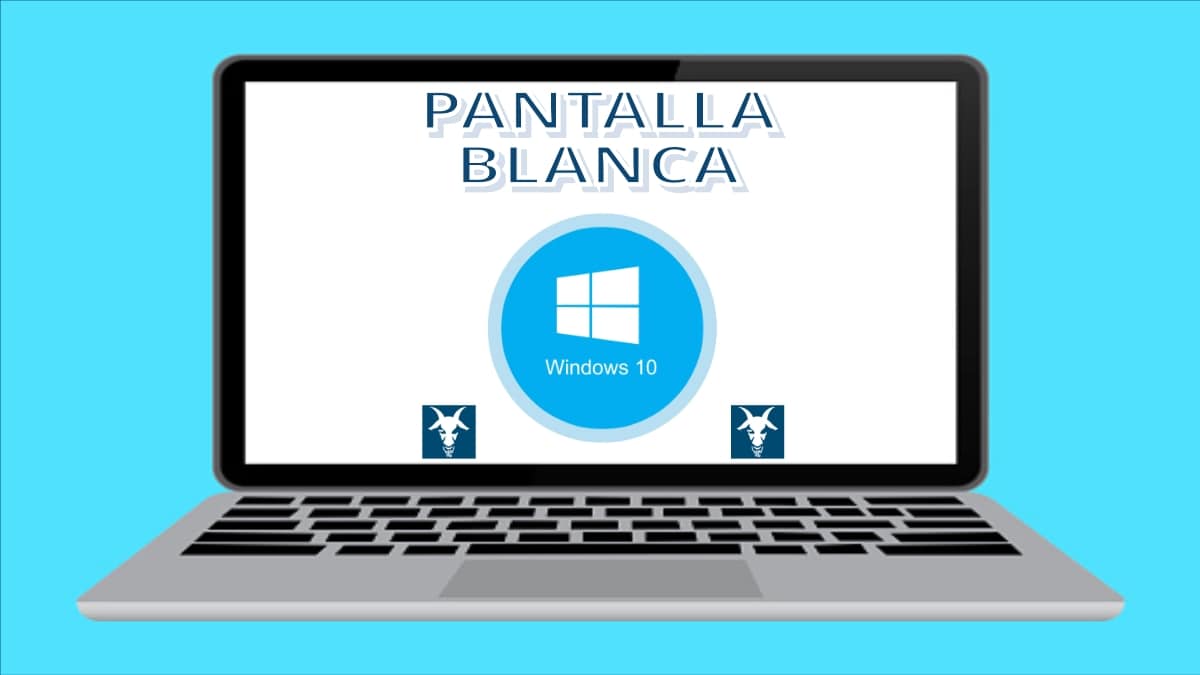
White screen Windows 10: how to fix this annoying problem
And as usual, before delving into this present publication on the various problems that arise on computers and specifically on why “Windows 10 does not detect mobile”, we will leave for those interested the links to some of our previous related posts with that topic. So that they can do it easily, if they wish to increase or reinforce their knowledge on this point, at the end of reading this publication:
“The Error Screens in Windows they are modes of notification of problems and errors, important or serious, configured within the Operating System to attract the user's attention, and thus show and inform them of them so that they can proceed to their earliest or immediate solution. And here we will show mainly and in detail how to fix “White Screen” problems in Windows 10". White screen Windows 10: how to fix this annoying problem

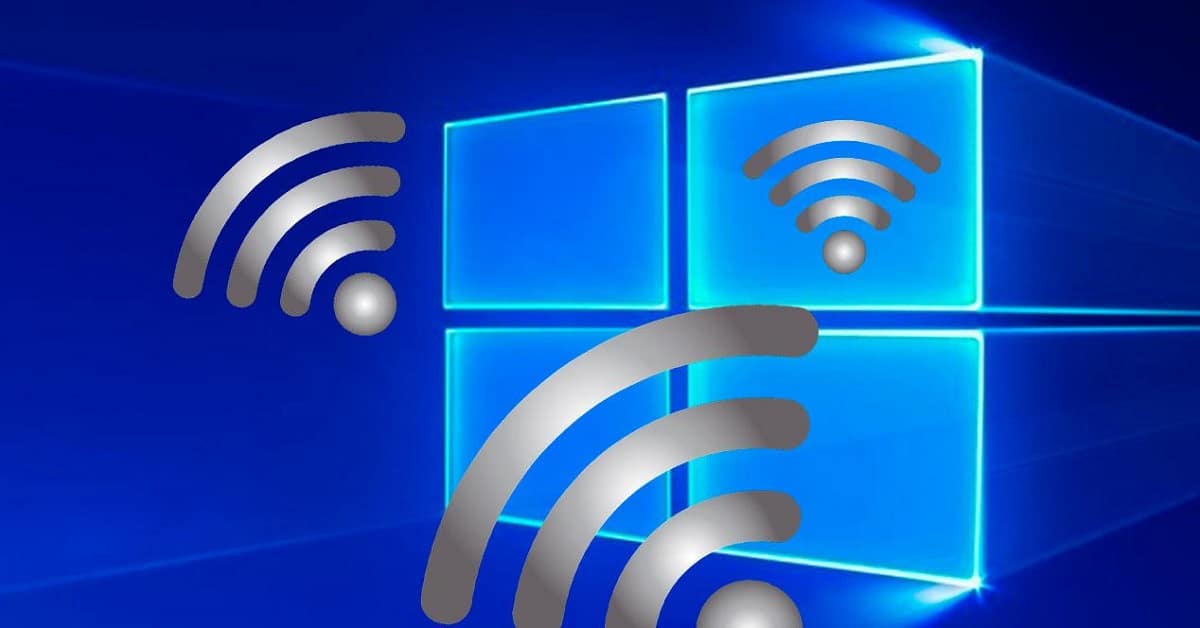
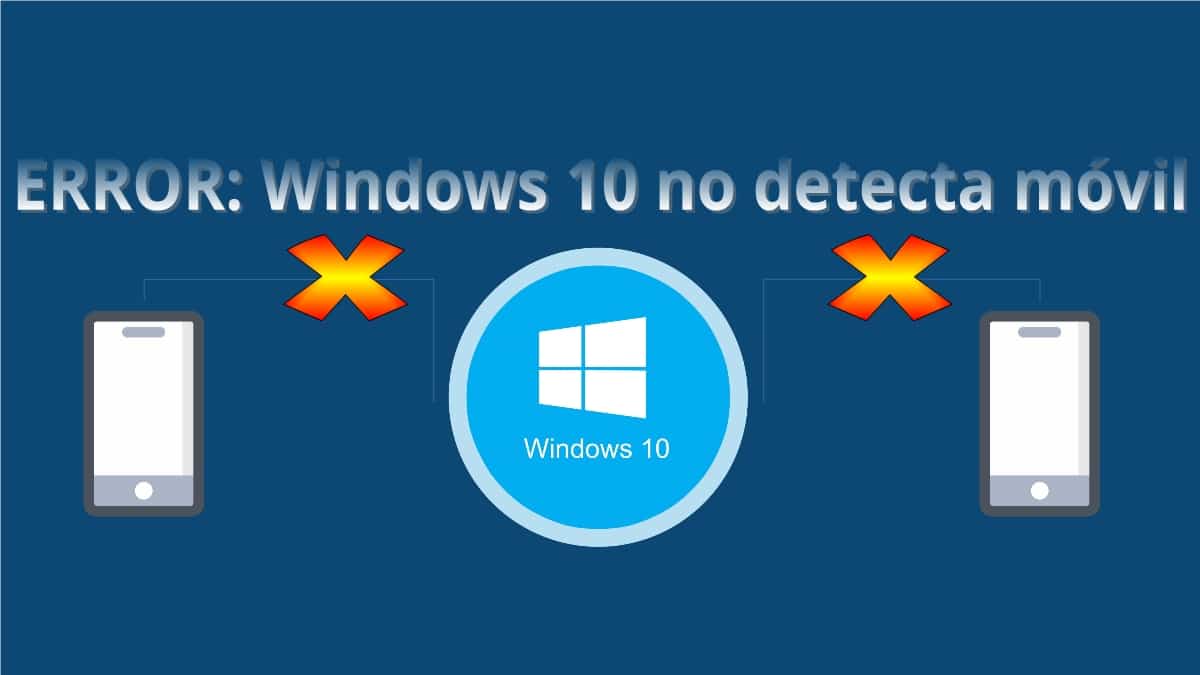
Windows 10 does not detect mobile: How to fix it?
Why does a Windows 10 not detect mobile?
As is logical and reasonable, and not only in Windows 10 y Windows 11 or another previous version of it, but also in any other proprietary and closed Operating System such as Mac OS o Free and open operating system as GNU / Linux, the most probable causes related to the problem that a mobile device is not detected at the first connection and the following attempts, is that said mobile device is by default, configured in the USB charging mode Instead of USB file transfer mode.
Or that the Operating System used does not currently have the drivers suitable for the recognition (detection) and management (management) of said mobile device. The latter is usually very common in the case of devices little-known mobile brands or very recent models from well-known manufacturers.
Therefore, we will list these and any other possible causes below and then consider the possible actions to solve them:
- Default mobile device in charging mode by USB connection.
- Absence of adequate and necessary drivers.
- Poor connection of the mobile device to the computer or the wrong USB cable.
- Other causes and solutions.
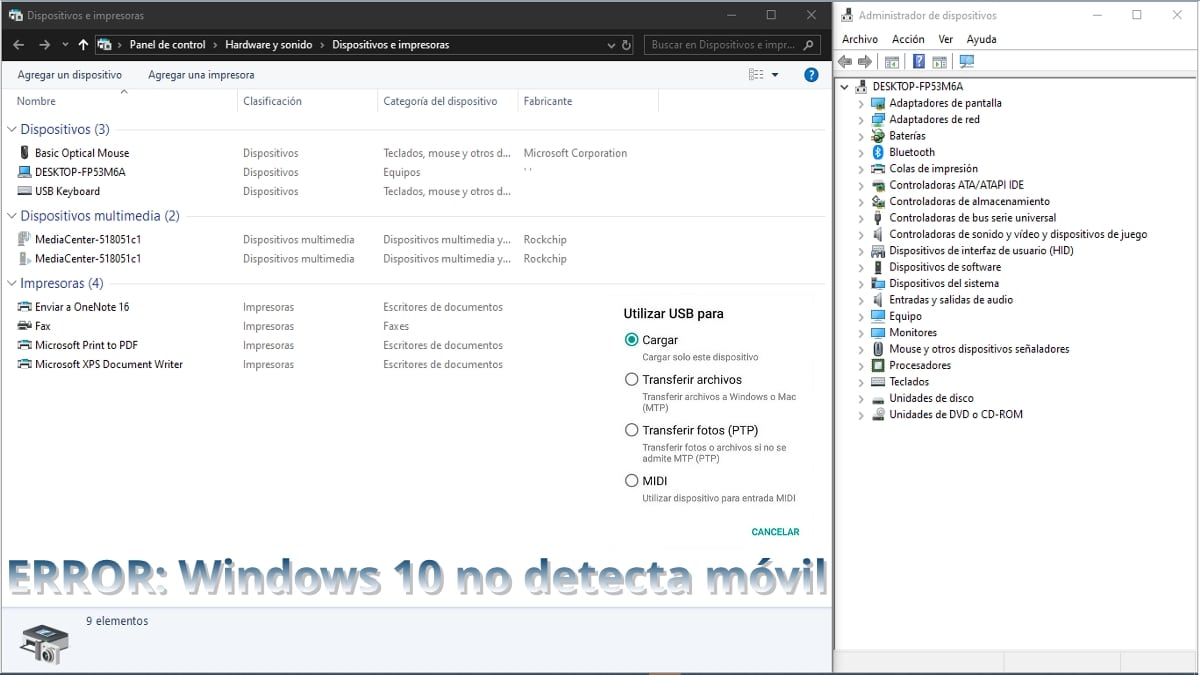
How to solve this problem?
Default mobile device in charging mode by USB connection
To this first cause to rule out, it is important to keep in mind that in general, mobile devices with Android Operating Systems They come by default in USB charging mode, despite the fact that they have at least two different connection modes to link to a computer. The other existing mode is USB file transfer mode.
Therefore, and given that the default mode is USB charging mode, the first thing we must do so that the Android mobile devices are detected and managed by a computer with Windows 10 is to activate the USB file transfer mode.
Being, the procedure and the solution to apply something very simple and fast, in most cases. That is, it should only unlock the mobile, explore the notification area sliding your finger from the top to the bottom on the screen, and then pressing on “charging mode” or any other similar or related messages. In order to do so, we will have access to the corresponding menu where we will have to select and activate the option of “File Transfer Mode”.
In this way, we will begin to see/hear messages or signs that the computer is recognizing, detecting and installing the mobile device. then give us access to exchange files between the two, through File Browser. It is worth noting that, in some cases, the mobile device may be configured by default, in the last configured mode. While, in other cases, we will have to do the same thing every time we connect it to the computer.
Absence of appropriate and necessary drivers to detect and manage the mobile device
To this second cause to rule out, it is important to note that the first cause must logically be ruled out. Since, when you enable the “File Transfer Mode” by USB, the Windows 10 Operating System and others, usually show on the screen a error message same or similar to “USB device not detected” o “Unknown USB Device”.
Therefore, in the face of these messages, the procedure and the solution to apply is also usually something very simple and fast, in most cases.
That is, you should only go inside Windows 10 or similar, to the route Control Panel\Hardware and Sound\Devices and Printers. Or failing that, reach the same functionality, through the Windows Device Manager. This via the following path: Control Panel\System and Security\System\Device Manager.
Once there, we only have to press right click on the “USB device not detected” o “Unknown USB Device” that is created corresponds to our newly connected mobile device. To start the recognition and detection of the mobile device. And so, achieve the download and installation of the respective driver or management software of the same, by selecting the option called "Update driver". To continue with the guided process that begins until the success of the operation.
Poor connection of the mobile device to the computer or the wrong USB cable
In case the first 2 actions fail, it is always good to discard that the USB cable and USB port used to connect the mobile device works properly. To do this, basically try the same procedure on another USB Port available and other USB Cable available. Both within the same computer and another computer, if necessary.
Other possible causes and solutions
Having already tried and ruled out the above causes and solutions, try the following:
- Restart the computer with the mobile device already connected: And repeat the previous actions.
- Check and uninstall any unnecessary or previously existing devices, programs or drivers: To avoid conflicts with older devices, drivers, and programs related to other previously connected mobile devices. Also, try disconnecting any other existing mobile devices, so that only the one currently required is tried.
- Try to use OEM USB drivers from each manufacturer: Which requires the installation of the specific USB driver of each manufacturer. To do this explore and visit the following link.
- Try to use generic MTP driver: What requires the installation of the USB MTP device driver, either, through the same procedure described in point number 2, when we execute "Update driver", but selecting the following options: Browse my computer for drivers \ Let me choose from a list of device drivers on my computer \ MTP USB Driver (MTP USB Device) \ Start the installation. This driver can also be obtained from the following links: link 1 / link 2.
- Install the official Media Feature Pack for N and KN versions of Windows 10: In case the last 2 steps have not been successful in recognizing, detecting and managing the mobile device via USB/MTP, you can resort to installing the Media Feature Pack software package, which will install Windows Media Player and related technologies on the computer, including MTP.
Other causes and more complex solutions
At this point, surely many have already solved the problem of “Windows 10 does not detect mobile”, but in case you still have the same problem and want to explore other less frequent or more advanced solutions We recommend exploring the following official link of Microsoft, or the following 2 alternatives in English: link 1 y link 2.
“MTP protocol is related to Windows Media Player. And some versions of Windows 10 do not have Windows Media Player and do not support related technologies such as the MTP protocol. Therefore, yesIf a Windows 10 does not recognize Android devices, it is recommended to download and install the Media Feature Pack”. Media Feature Pack for Windows 10 N and Windows 10 KN editions

Summary
In short, solving the problem of “Windows 10 does not detect mobile” it is not something that can be considered difficult or cumbersome to solve. Surely a little reading and patience will allow many to solve the same with a few simple steps. And should it become a difficult problem to fix there is always plenty of documentation on hand from third parties. Which, surely they have already managed to overcome it using measures or actions that are a little less known and more complex.
Finally, we hope that this publication will be very useful for the entire «Comunidad de nuestra web». And if you liked it, be sure to comment on it here and share it with others on your favorite websites, channels, groups or communities on social networks or messaging systems. Also, remember to visit our HOMEPAGE to explore more news, and join our official group of FACEBOOK.